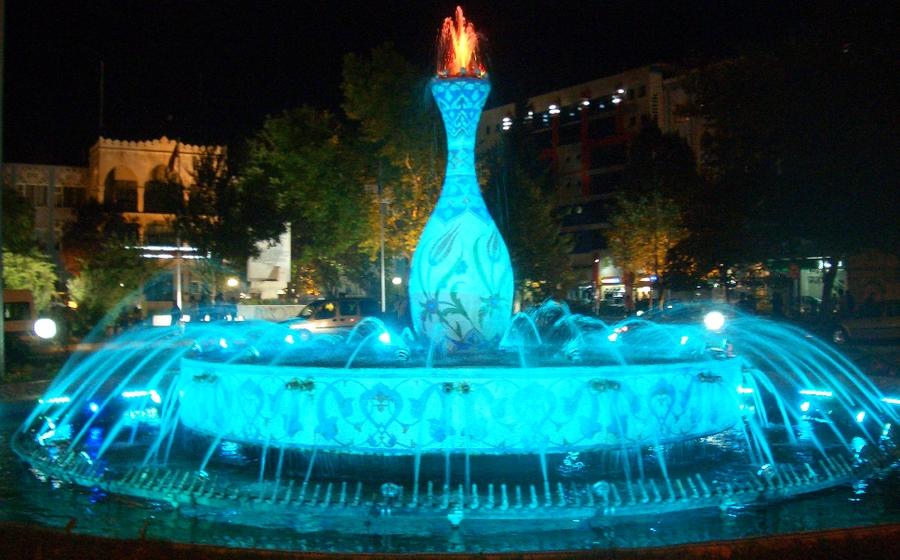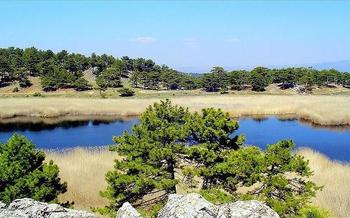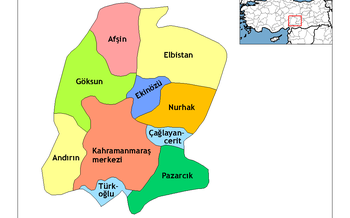
Kütahya Japan Garden
- The Rebirth of a City:
- The Visionary Behind the Garden
- A Bridge Between Two Cultures
- A Tranquil Oasis in the Heart of the City
- Strolling Through the Garden's Pathways
- Exploring the Garden's Symbolism
- Experiencing the Garden's Cultural Events
- Finding Inner Peace Through Meditation
- Savoring Authentic Japanese Cuisine
- Cherry Blossom Season:
- Learning About Japanese History and Culture
- Accessibility and Practical Information
- For Photography Enthusiasts
- Insider Tip: Unveiling a Hidden Gem
The Rebirth of a City:
Kütahya, a city nestled in the heart of Turkey, has undergone a remarkable transformation, evolving from a center of traditional crafts to a vibrant hub of art and culture. This metamorphosis can be attributed to the vision of Dr. Kazuo Inamori, a Japanese entrepreneur and philanthropist, who played a pivotal role in revitalizing the city through his unwavering dedication to promoting cross-cultural understanding.
Historical Context of Kütahya's Transformation: Kütahya, with its rich history dating back to ancient times, was renowned for its exquisite ceramics, earning it the title of "the city of pottery." However, as the global economy shifted, the city's traditional industries faced challenges, leading to a decline in its economic prosperity.
Kütahya's Unique Identity: In the midst of these challenges, Kütahya retained its unique spirit, boasting a diverse population with strong ties to their cultural heritage. This cultural richness became the foundation upon which the city's transformation would take place.
How Art Played a Pivotal Role in the City's Renewal: Dr. Kazuo Inamori recognized the potential of Kütahya's cultural heritage and envisioned a city where art and culture would flourish. Through the establishment of the Kütahya Japan Garden and the Inamori Forest project, he aimed to breathe new life into the city, fostering a creative environment that would attract visitors from around the world.
The Visionary Behind the Garden
Dr. Kazuo Inamori, a renowned Japanese entrepreneur and philanthropist, played a pivotal role in the creation of the Kütahya Japan Garden. Born in Kagoshima, Japan, in 1932, Dr. Inamori was a self-made man who rose from humble beginnings to become one of the most successful businessmen in Japan. He founded Kyocera Corporation, a global leader in ceramics and electronics, and later established the Inamori Foundation, a philanthropic organization dedicated to promoting cultural exchange and understanding between Japan and other countries.
Dr. Inamori had a deep appreciation for Turkish culture and history, having visited the country several times. He was particularly impressed by the city of Kütahya, with its rich ceramic tradition and beautiful natural surroundings. Inspired by the city's potential, Dr. Inamori envisioned creating a Japanese garden in Kütahya as a symbol of friendship and cultural exchange between Japan and Turkey.
The "Inamori Forest" project, as it was initially called, was conceived as a garden that would showcase the essence of Japanese culture and aesthetics while also serving as a place of peace and tranquility for the people of Kütahya. Dr. Inamori's vision was to create a space where people from both countries could come together, learn from each other, and foster mutual understanding.
A Bridge Between Two Cultures
The Kütahya Japan Garden is not just a serene oasis in the heart of the city; it is also a powerful symbol of the bridge that connects Turkish and Japanese cultures. The garden was designed to reflect the essence of traditional Japanese gardens, which have a long and rich history.
Japanese gardens originated in the 6th century AD, and they have evolved over the centuries to reflect the changing philosophies and aesthetics of Japanese society. The gardens are typically designed to represent natural landscapes, such as mountains, forests, and rivers. They often incorporate elements such as water features, rocks, and plants, which are arranged in a way that creates a sense of harmony and balance.
The Kütahya Japan Garden draws inspiration from these traditional principles, while also incorporating elements that are unique to Turkey. The garden features a variety of plants and trees that are native to both countries, creating a unique blend of East and West. The garden is a testament to the power of cultural exchange, and it serves as a reminder that even though cultures may be different, they can still find common ground through shared values and appreciation for beauty.
A Tranquil Oasis in the Heart of the City
As you step through the garden's entrance, an immediate sense of tranquility and serenity envelops you. The hustle and bustle of city life fade away, replaced by the gentle rustling of leaves and the sweet melody of birdsong. The garden's carefully landscaped paths lead you through a tapestry of vibrant colors and textures, each element contributing to the overall harmony and balance of the space.
At the heart of the garden lies a serene pond, reflecting the surrounding foliage like a mirror. Cherry blossom trees, with their delicate pink and white petals, create a breathtaking canopy overhead, while ornamental bridges arch gracefully across the water, inviting visitors to explore the garden's hidden corners.
Nestled amidst the lush greenery, traditional Japanese teahouses offer a sanctuary for contemplation and relaxation. Here, you can sip on authentic matcha tea while savoring the exquisite flavors of traditional Japanese sweets, immersing yourself completely in the tranquility of the garden.
My most cherished experience within the Kütahya Japan Garden was finding a secluded spot beneath a weeping willow tree. As I sat in silent contemplation, the gentle breeze carried the faint scent of cherry blossoms, and the sound of the water gently lapping against the shore created a soothing symphony. It was in that moment that I truly understood the garden's profound ability to transport visitors to a realm of peace and tranquility.
Strolling Through the Garden's Pathways
As you step through the garden's entrance, a world of tranquility and serenity unfolds before you. The winding paths, meticulously lined with vibrant greenery, invite you to explore the garden's hidden corners and uncover its enchanting beauty.
At the heart of the garden, a serene pond reflects the surrounding foliage, creating a picturesque tableau. Cherry blossom trees, with their delicate pink and white petals, line the banks, adding a touch of ethereal elegance to the scene.
As you continue your journey, you will encounter a traditional torii gate, marking the entrance to a sacred space. Step beneath its vermilion arch and feel transported to the mystical realm of ancient Japan.
Further along, you will discover a serene teahouse, where you can indulge in a cup of traditional Japanese tea while contemplating the garden's tranquil atmosphere. The teahouse's simple yet elegant architecture blends seamlessly with the surrounding natural beauty, creating a space that is both inviting and contemplative.
Don't miss the exquisite pagoda, a symbol of spiritual enlightenment, which stands tall amidst the lush greenery. Its intricate details and graceful curves are a testament to the craftsmanship and artistry that went into its creation.
Finally, take a moment to explore the rock garden, a miniature landscape that evokes the essence of the natural world. Carefully placed stones, representing mountains, islands, and waterfalls, create a serene and meditative space that invites contemplation and introspection.
Exploring the Garden's Symbolism
Beyond its aesthetic beauty, the Kütahya Japan Garden is imbued with profound symbolism that invites visitors to contemplate the deeper meanings behind its elements. Each stone, water feature, and plant holds a hidden significance, reflecting the garden's overarching themes of harmony, balance, and the pursuit of enlightenment.
The rocks, for instance, represent the solidity of the earth and the foundation upon which life is built. The water features, on the other hand, symbolize the fluidity of change and the impermanence of all things. Together, these elements remind us of the interconnectedness of all things and the delicate balance that exists between stability and change.
The plants in the garden also carry symbolic meaning. The cherry blossom trees, for example, represent the beauty of life's fleeting moments and the importance of cherishing each day. The bamboo symbolizes resilience and adaptability, reminding us of our ability to overcome challenges and grow stronger.
Through its carefully crafted symbolism, the Kütahya Japan Garden invites visitors to embark on a journey of self-discovery and reflection. It is a place where one can find solace, connect with nature, and gain a deeper understanding of the human condition.
Here is an anecdote that illustrates the garden's symbolic power:
During a visit to the garden, I stumbled upon a stone lantern hidden amidst the lush greenery. As I paused to admire its intricate carvings, I noticed a small group of children playing nearby. One of the children, a young girl, approached me and asked what the lantern represented. I explained to her that it symbolized the light that guides us through darkness and helps us find our way in life. The girl's eyes lit up with wonder, and she thanked me for sharing this knowledge with her.
This encounter reminded me of the garden's ability to spark curiosity, inspire contemplation, and connect people from different cultures. It is a place where symbols come alive and where visitors can find new insights into the human experience.
Experiencing the Garden's Cultural Events
The Kütahya Japan Garden hosts a variety of cultural events and workshops throughout the year, providing visitors with unique opportunities to immerse themselves in Japanese culture. These events celebrate the rich traditions and arts of Japan, offering a glimpse into its fascinating history and way of life.
From traditional tea ceremonies to calligraphy workshops, visitors can participate in hands-on experiences that allow them to learn about Japanese customs and practices firsthand. The tea ceremonies, in particular, are a highlight, offering a serene and meditative experience where participants can learn the art of preparing and serving matcha tea, accompanied by traditional Japanese sweets.
During the cherry blossom season, the garden comes alive with hanami (cherry blossom viewing) parties, a beloved Japanese tradition that celebrates the fleeting beauty of the cherry blossoms. Visitors can gather under the blooming trees, enjoying picnics, music, and performances while marveling at the delicate pink and white blossoms.
These cultural events not only provide a deeper understanding of Japanese culture but also create a sense of community among visitors. They offer a platform for cultural exchange and dialogue, fostering connections between people from different backgrounds and promoting mutual respect and appreciation.
Finding Inner Peace Through Meditation
Amidst the picturesque landscapes and serene atmosphere of the Kütahya Japan Garden, visitors are invited to embark on a journey of inner peace and self-discovery through meditation. The garden provides the perfect setting for practicing mindfulness and connecting with nature, offering a sanctuary for those seeking tranquility and spiritual growth.
To enhance your meditation experience, find a quiet spot beneath the shade of a cherry blossom tree or by the tranquil pond. Close your eyes, take deep breaths, and let the sounds of nature wash away your worries. Focus on the present moment, letting go of any distractions and allowing your mind to settle into a state of calm awareness.
The garden's serene environment encourages introspection and self-reflection. As you sit in meditation, contemplate the symbolism of the garden's elements, such as the ever-changing water features and the steadfast stones. Reflect on the transience of life and the importance of finding harmony within yourself and the world around you.
Whether you are a seasoned meditator or a beginner seeking a peaceful retreat, the Kütahya Japan Garden offers a unique opportunity to connect with your inner self and find solace in the beauty of nature. Embrace the tranquility of the garden and allow its serene atmosphere to guide you on a journey of self-discovery and inner peace.
Savoring Authentic Japanese Cuisine
At the heart of the Kütahya Japan Garden lies a charming teahouse, inviting visitors to indulge in the culinary delights of Japan. Step into this serene space and immerse yourself in the aromas of freshly brewed matcha tea, the delicate sweetness of mochi, and the savory flavors of udon noodles.
The teahouse offers a carefully curated menu that showcases the essence of Japanese cuisine. Sip on a cup of frothy matcha, whisked to perfection, and savor its vibrant green hue and earthy notes. Pair it with a selection of traditional Japanese sweets, such as mochi, delicate rice cakes filled with sweet red bean paste or other delightful fillings.
For a more substantial meal, indulge in a bowl of udon noodles, thick and chewy wheat noodles served in a flavorful broth. Choose from various toppings, such as tempura shrimp, vegetables, or thinly sliced beef, to enhance your dining experience.
When ordering, feel free to ask the friendly staff for recommendations or guidance on navigating the menu. They will be delighted to assist you in choosing dishes that suit your preferences and provide insights into Japanese culinary traditions. Embrace the opportunity to savor authentic Japanese cuisine in this tranquil setting, where taste and tranquility intertwine.
Cherry Blossom Season:
In the realm of Japanese culture, the cherry blossom holds an esteemed position, symbolizing the ephemeral beauty of life and inviting a sense of wonder and awe. The Kütahya Japan Garden pays homage to this exquisite flower, offering visitors a mesmerizing spectacle during the cherry blossom season. As spring approaches, the garden transforms into a vibrant tapestry of pink and white hues, with delicate cherry blossoms adorning the trees like a crown of jewels.
The best time to witness this enchanting display is typically from late March to mid-April, when the blossoms reach their peak. During this period, the garden becomes a popular destination for locals and tourists alike, who gather to celebrate the arrival of spring and witness the breathtaking beauty of the cherry blossoms. Whether you choose to stroll beneath the flowering trees, capture the moment with your camera, or simply sit and admire the ethereal sight, the cherry blossom season at the Kütahya Japan Garden is an experience that will leave an enduring impression.
Learning About Japanese History and Culture
The Kütahya Japan Garden is not just a breathtaking work of art but also a treasure trove of knowledge about Japanese history and culture. Within the garden's premises, visitors will find a museum that houses a remarkable collection of artifacts, artworks, and historical documents that provide a glimpse into Japan's rich past.
The museum's exhibits are carefully curated to showcase the diverse aspects of Japanese culture, from ancient traditions to modern-day innovations. Visitors can learn about the country's unique art forms, such as calligraphy, tea ceremony, and flower arrangement. They can also explore the history of Japanese textiles, ceramics, and lacquerware, and gain insights into the country's fascinating religious beliefs and practices.
Guided tours are available for those who wish to delve deeper into the museum's collection. Knowledgeable guides provide expert commentary and explanations, bringing the exhibits to life and helping visitors understand the cultural and historical significance of each item.
By visiting the museum at the Kütahya Japan Garden, visitors can gain a deeper appreciation for the rich heritage of Japan and its enduring influence on the world. It's an opportunity to immerse oneself in the beauty and complexity of a culture that has captivated hearts and minds for centuries.
Accessibility and Practical Information
To fully appreciate the beauty and serenity of the Kütahya Japan Garden, it's essential to plan your visit carefully. The garden is conveniently located in the heart of the city, making it easily accessible by public transportation or private vehicle. Detailed directions and maps are readily available online or at the city's tourist information center.
Operating hours vary depending on the season, so it's advisable to check the garden's official website or social media pages for up-to-date information. Admission fees are minimal, ensuring that visitors from all walks of life can enjoy this unique cultural experience.
For those with limited mobility, the garden is wheelchair accessible, with ramps and designated pathways throughout the grounds. Visitors with disabilities are encouraged to contact the garden's staff in advance to arrange for any special assistance they may require.
To make the most of your visit, consider allocating at least two to three hours to fully explore the garden's various sections and attractions. Comfortable shoes are recommended, as you'll be doing a fair amount of walking. Remember to bring a camera to capture the garden's picturesque scenery and keep yourself hydrated, especially during warmer months.
Whether you're a solo traveler seeking tranquility, a couple looking for a romantic getaway, or a family seeking a fun and educational outing, the Kütahya Japan Garden promises a memorable and enriching experience.
For Photography Enthusiasts
The Kütahya Japan Garden is a visual masterpiece, a photographer's paradise that offers endless opportunities to capture stunning shots. The garden's meticulously landscaped vistas, vibrant colors, and serene atmosphere create a picturesque backdrop for photography enthusiasts of all levels.
For the best lighting conditions, plan your visit during the golden hours, just after sunrise or before sunset, when the soft, warm light casts a magical glow on the garden's landscapes. Experiment with different angles and perspectives to capture the garden's unique features, from the vibrant cherry blossoms to the tranquil ponds and teahouses.
As you stroll through the garden, keep an eye out for the many hidden nooks and crannies that offer unique compositions. Don't be afraid to venture off the beaten path and explore the garden's lesser-known corners, where you might stumble upon unexpected photo opportunities.
Whether you're a seasoned professional or just starting your photography journey, the Kütahya Japan Garden is a place where you can unleash your creativity and capture the essence of this enchanting Japanese oasis. So bring your camera, embrace the beauty of the garden, and let your lens do the talking.
Insider Tip: Unveiling a Hidden Gem
Within the tranquil embrace of the Kütahya Japan Garden lies a secret spot that unveils a breathtaking panorama of the city. Nestled amidst the lush greenery and vibrant blooms, this hidden gem offers a sanctuary of serenity and unparalleled vistas.
To discover this secluded haven, wander along the winding paths, allowing the garden's beauty to guide you. As you approach the northern corner, nestled between towering trees and cascading waterfalls, you will find a secluded bench overlooking the cityscape. Here, time seems to stand still as you immerse yourself in the mesmerizing views.
The early morning hours, as the sun casts its golden rays across the city, present a magical spectacle. The rooftops glisten with a warm glow, and the distant mountains emerge from the mist, creating a breathtaking backdrop. As the day unfolds, the cityscape transforms into a vibrant tapestry of colors, with the hustle and bustle of daily life adding a dynamic energy to the scene.
Whether you seek a moment of solitude to reflect on the garden's beauty or a breathtaking vista to capture on camera, this hidden spot offers an unforgettable experience. Embrace the tranquility, let your gaze wander, and allow the city's charm to captivate your senses.









